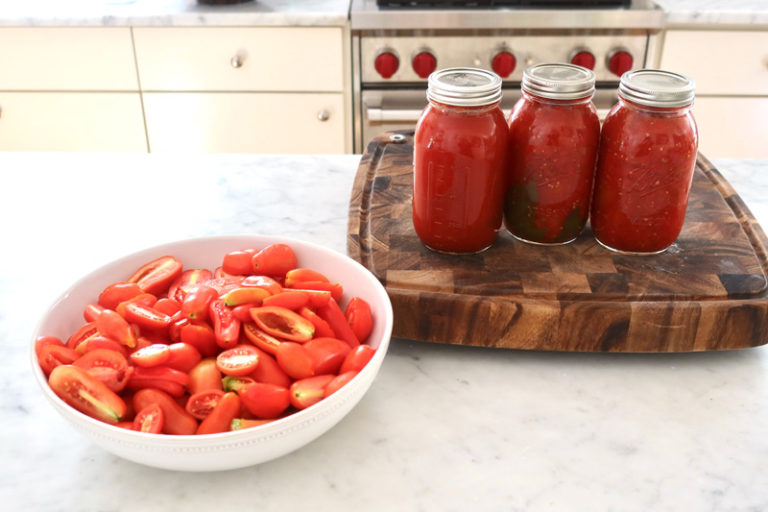
Though social media has its problems, and some elements totally annoy me, good things happen, like finding long-lost friends, staying in touch with friends far away. And then there are the times when you think, “I want to find someone preserving local tomatoes during the harvest season …” You look on Facebook and presto! You find Ned Casey and Immacolata (Tina) Parisi in the middle of their saucing season.
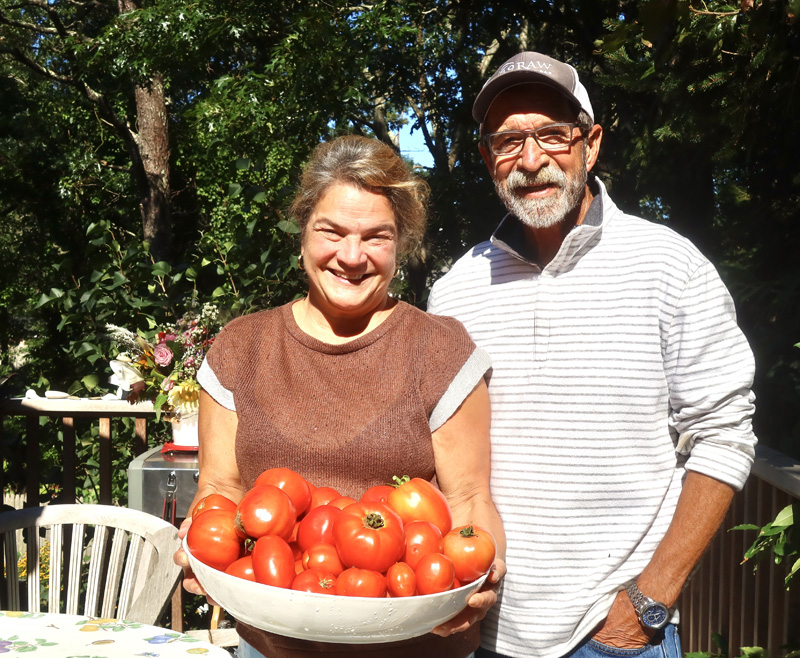
Usually, I see posts on Ned’s timeline of this energetic couple from Edgartown on Ned’s boat or near the water with their three Jack Russells. This time, I found a photo of Ned in front of a table full of their end-of-the-season tomato harvest.
I reached out to him and he enthusiastically invited me over to catch the action.
When I get there, Tina and Ned are set up inside their house and out on their deck for the production ahead. The deck table is covered with gorgeous, perfectly ripe tomatoes.
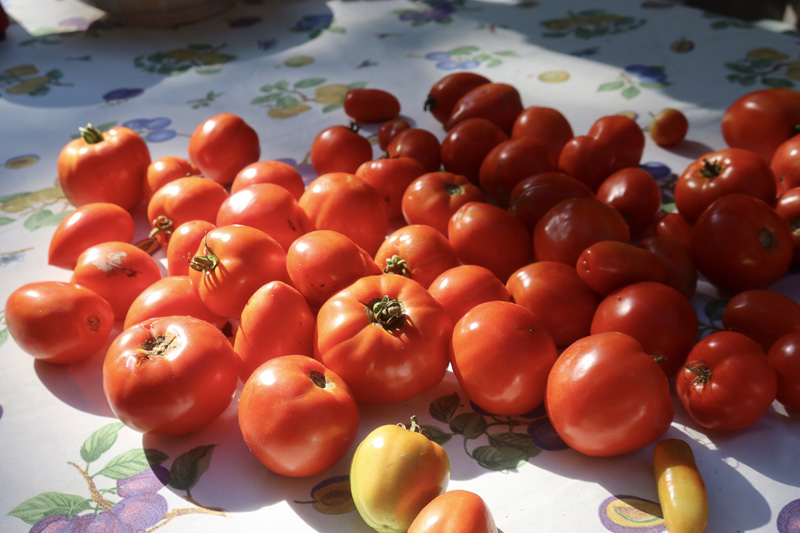
Their Edgartown home is clearly designed around the kitchen, with large slabs of Carrara marble for the countertops and a huge working island.
Quart jars are being sterilized in water baths on the professional range. Tina stands slicing tomatoes with a small paring knife, then Ned patiently sends them through the tomato press on the deck. After the final press, the large pot of fresh tomato puree will go on the stove to reduce and thicken a bit.
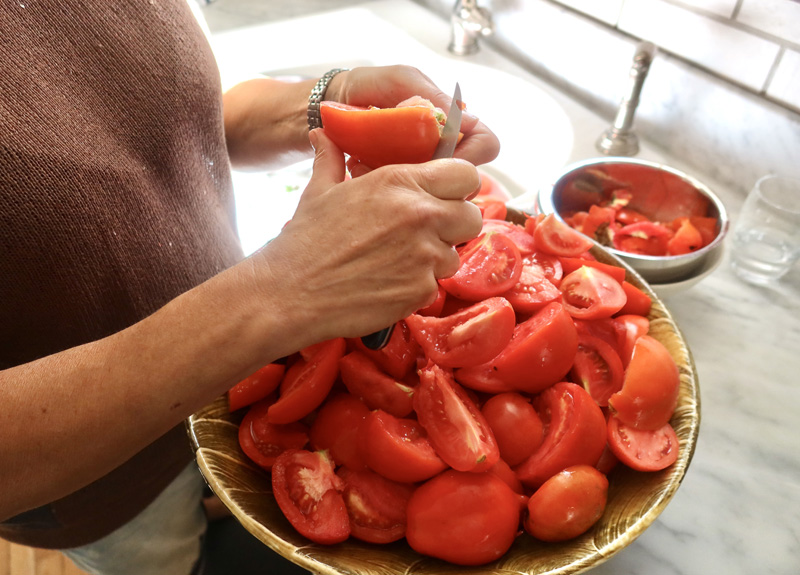
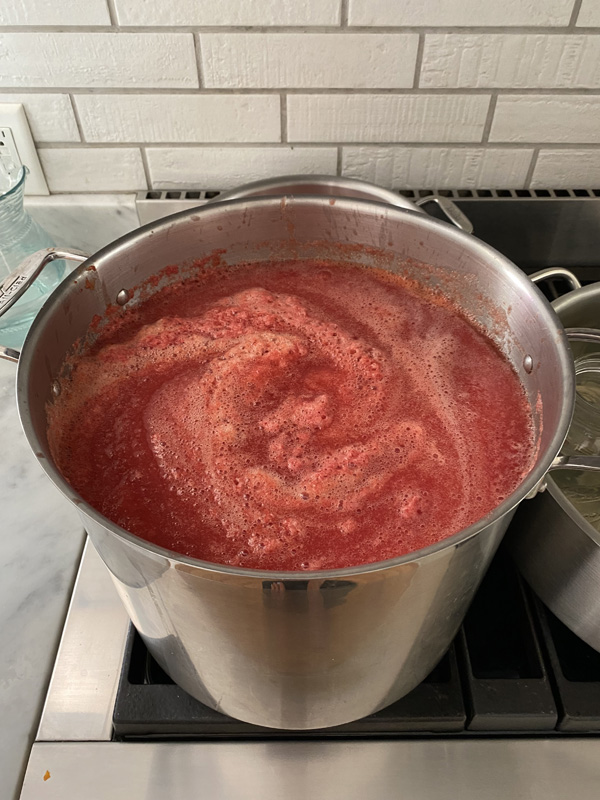
Ned has been hunting and fishing on the Island for decades, so growing food isn’t a stretch. “This year we grew Persimmon paste tomatoes, and two types of Roma, slicing tomatoes, and cherry,” Ned tells me. “You never really know how the sauce is going to taste, because of all the varieties we grow. We had over 50 plants this year.”
“A lot of the tomatoes didn’t really mature this year,” Tina says. “July was really rainy, then the humidity. Tomatoes like sunny hot weather.”
For the start of the process, they use a tomato press called a Spremi, which removes the skins and seeds. “We run each batch at least three times for the optimum flavor,” Ned says.
He shakes his head. “It’s a lot of work — this is our fourth tomato sauce batch of the season.”
He insists you get a lot of sweetness from the skins, and that you can avoid the bitterness of the seeds using the Spremi versus using an emulsion blender or food processor. Tina chimes in: “The women in my mother’s generation would never have kept the seeds in their sauce.”
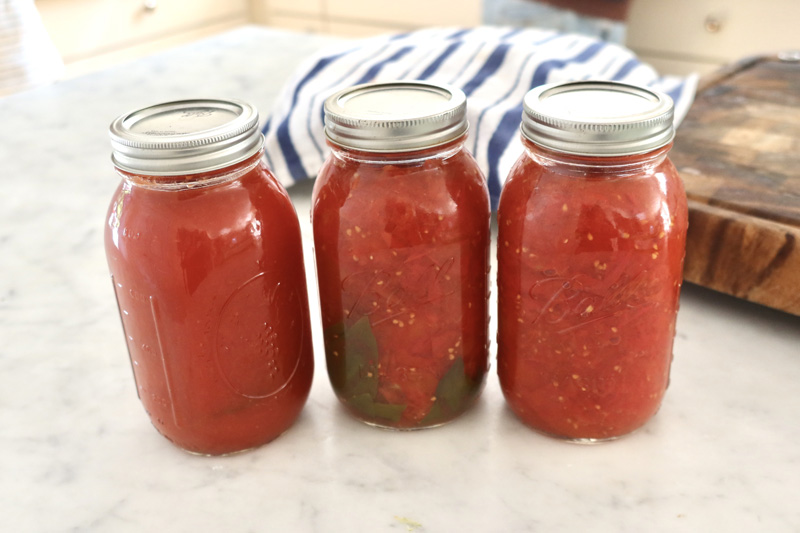
Tina is the diminutive name of Immacolata, which means Immaculate, as in Our Lady of the Immaculate Conception. She grew up in Brooklyn with her parents, who are from Northern Naples. Her parents came over on the Andrea Doria and settled in Brooklyn the year before the Andrea Dorian sank. “My father is 95,” she says, “and my mother is 91.”
“They still cook every day,” Ned says.
“All the Italian Americans had kitchens in their basements and made huge batches of sauce,” Tina says. “My father even pressed his own wine. He would order 50 cases of red and white grapes, and after pressing he would store the wine in big old Kentucky bourbon barrels. He made enough wine to last a whole year.”
“Every time we would go back to Tina’s parents in Brooklyn, the sauce was so good, so we thought, why shouldn’t we make our own?” Ned tells me. Ned and Tina have been growing their own tomatoes in their backyard and making sauce for the past five years. “The sauce that we make is the base for all of our sauces — Putanesaca, Bolognese, pizza, even Bloody Mary mix — we use it for everything.”
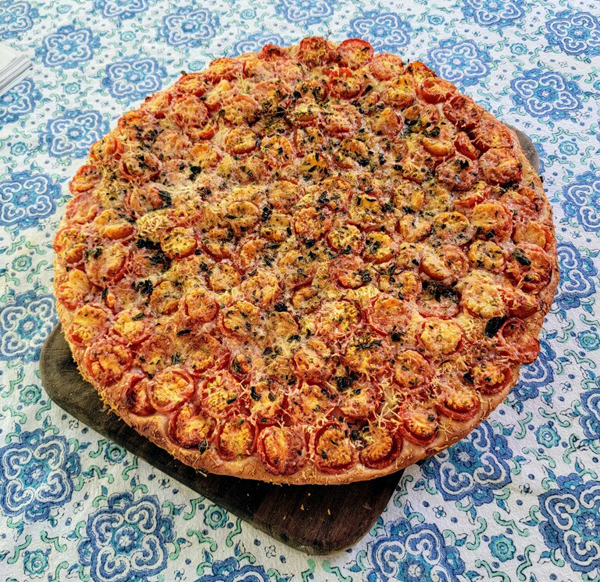
This year they started the whole process from scratch. In the kitchen, there are tomato seeds drying on the countertop to save for planting next year. “All the tomatoes this year came from seeds, which makes the process even harder,” Tina says. “In the past, we started with small tomato plants. but we did get a few really incredible plants out of the seeds, so I guess the extra effort is worth it.”
To really know if it is worth the effort, on some cold, gray day this winter, Ned and Tina will spend the afternoon in their kitchen creating a Bolognese with the tomato sauce. It will bring them back to the gorgeous late summer harvest of their jarred sunshine.
Lucky for us, they’ve shared their recipes. You’ll have to get your own tomatoes, though.
Tomato Puree
- Wash tomatoes. Dry them somewhat to minimize water content.
- Cut tomatoes lengthwise into pieces which will fit easily through the opening of a specialty processor (Spremi or other brand).
- Skins and seeds can and should be passed through 3 or 4 times to get all the tomato juice, pulp closest to skin, etc. This reduces the mess and gives you more puree in the end.
- Eliminate most of the water content by reducing your finished tomato juice at medium to high heat (not too high; you don’t want it to burn at the bottom of the pot and ruin the batch). When juice is heating, there may be foamy, frothy stuff on top (sludge). Skim this off — it may add a bitter taste to the sauce. Do this for about 2 hours or until maybe 1/5 to a 1/4 of the liquid remains in the pot. It should appear as a puree, neither liquid nor sticky or pasty.
- Sterilize the Ball jars and the lids first. Clean the jars first, then place them in a pot of water to cover jars at least 3/4 of the way and boil lightly (simmer) for about half an hour. Lids can be re-used next year if not rusty.
- Put 1 teaspoon of salt into each jar. Basil is good for tomato puree, unless you don’t like the flavor or are allergic. It isn’t needed. Tina says she likes lots. Put leaves into each jar after the salt. Fill the jars with puree to tippy top. The less air the better. Too much air will leave room for spoilage. Seal the jars as tight as possible but not dangerously to break or injure yourself. (Careful: All this stuff is still very hot.)
- Put the filled, sealed jars into a water bath. Tina uses hot water to start because she says she’s afraid of broken jars, which can result in bringing together extreme temperatures. Bring the water to a simmer over low to medium heat and leave enough space between jars so they don’t touch each other. While boiling, if Tina hears them knocking into each other she uses a utensil to carefully and gently move jars enough to separate from clanging into each other. Go about 20 minutes at a real simmer.
- Remove the jars from the hot water and line them up in rows, where they can rest undisturbed and again not touching. Cover with a towel to cool slowly at room temperature. When COMPLETELY cool, remove the towel and store.
These jars of puree will last a year and longer stored cool and dry and unopened. Sometimes a jar will go “off.” If you open and there is mold or it looks funky at the top DON’T use.
Good luck!